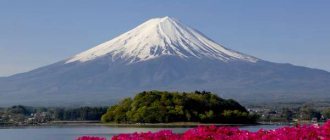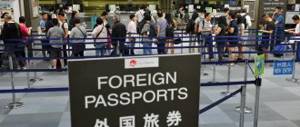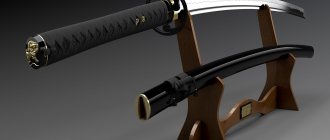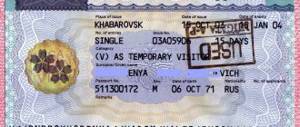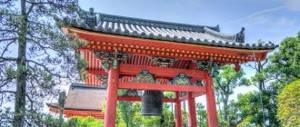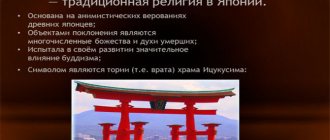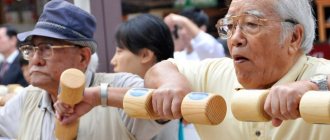Japan is a country of contrasts with an outstanding culture. Although each country is unique in its own way, Japan still stands out because it is a stunning fusion of East and West that cannot be found anywhere else. This is a country of robots and skyscrapers, anime, sumo and samurai, for an outsider it is not only mysterious, but sometimes incomprehensible.
However, the Land of the Rising Sun has one drawback - it’s expensive to vacation here. This is not surprising, given the high standard of living of the Japanese. And yet, the country’s many advantages and its uniqueness attract many guests. Although people often go to Japan not to lie on the beach by the ocean, but to become familiar with Japanese culture, the climate is still very important - this is what the story will be about.
Climate zones of Japan
The nature here is also full of contrasts: despite its small area, the archipelago stretches from north to south, as a result the climate on each island is different, which provides many opportunities for recreation both in summer and winter. In Japan, there are as many as four climatic zones, and if you go from north to south, the first will be moderately cold, in which the entire island of Hokkaido is located, considered by the Japanese to be almost a pole. In reality, of course, it is not that cold here, but the winters are snowy - Hokkaido is famous for its snowstorms, and the summers, although hot, are much shorter than on other islands. People come here to ski resorts.
It is warmer on the island of Honshu, the largest in Japan, where 80% of its population lives. It belongs to a zone of moderately warm climate, and this is what is usually imagined when mentioning Japan. In winter there is snow here, but not always and not for long, and already in early March sakura begins to bloom. With it comes a warm spring - the best time to visit these places.
And in the summer in the south of Honshu, the time comes for Hotarugari - admiring fireflies. The night darkness of Japanese forests and fields is filled with the magical light of myriads of fireflies, attracting many photographers eager to capture this spectacle.
The third zone is the subtropics, which include the south of Honshu, Kyushu and the north of the Ryukyu archipelago. There is practically no winter here, and in summer it is hot and too humid. The best time to go here is in the fall – the best time to swim at the local beaches.
Finally, there are some real tropics in Japan - this is the south of the Ryukyu, primarily Okinawa. The breeze saves you from the heat, so it’s nice to relax here in the summer, and indeed all year round.
The pinnacle of civilization
It seems to us that we already live, having all the benefits of civilization at hand. And if we are asked about the most developed countries, we immediately remember the USA or some European country. In fact, the cradle of technological progress and the pinnacle of all modern blessings is Japan. Humanoid robots, electronic dogs, the latest autobahns and futuristic virtual reality inventions are all here. After all, the Japanese not only look at cherry blossoms and draw anime, but study almost their entire lives and move our future forward.
Photo: (CC BY-SA 3.0)
Photo: (CC BY-SA 3.0)
Tourist seasons and places to visit
In Japan there is no concept of “low season” ; people come here to relax at any time of the year, but the vacation will be different, because the seasons in Japan are very different from each other, and they come abruptly.
And yet, summer is less suitable for tourism than other seasons - it is the rainy season in Honshu at this time, and it can be both stuffy and rainy. The sky is constantly overcast, the humidity level is high, which makes everything damp and mold appears - and therefore you may not like Honshu in the summer; even the inhabitants of the island themselves most often go on vacation to other places at this time of year. But you shouldn’t completely abandon the idea of going to Japan in the summer - it is at this time of year that the largest number of festivals and holidays are held, so it will be interesting! This is a good time to travel around the Japanese countryside and go on vacation in the mountains.
The Japanese themselves distinguish as many as six seasons of the year: in addition to the four usual ones, this is also the tsuyu season, which translates as “plum rains,” which lasts about a month and a half, and the season of autumn transparency or Japanese clarity - late autumn until winter. In Japan, late autumn is strikingly different from ours, and it has such poetic names for a reason - for many Japanese, its days are absolutely favorite. It is at this time that the country is filled with red momiji leaves, creating beautiful views that can compete with sakura.
Winter is usually dry and snowless. Sometimes it rains, but usually the sky is clear. It’s not cold here at all, and you can freely walk around the streets in a sweater. Of course, in winter the scenery in the area is not so good, because the trees lose their leaves and the area is not covered with emerald grass - but still, being on the main island of Japan in winter is very pleasant.
But the best times of the year to travel to Tokyo and Honshu are spring and autumn, because in the spring this country is painted green and pink, and in the fall yellow and red - both look very beautiful. From Tokyo you can go to the outskirts of Fuji - there are many hot springs and the spirit of a real Japanese outback.
It is wrong to imagine Japan as a country consisting entirely of megacities - more than 70% of its territory is occupied by sparsely populated mountains and volcanoes. There are only 108 active volcanoes in the country, and the main one is one of the symbols of Japan, Fuji. This volcano annually attracts many tourists both from Japan itself and from beyond its borders, because there is really something to admire here. Kyoto is another tourism center; there are always a lot of guests here, most of them the Japanese themselves. After all, Kyoto is an ancient capital, now famous mainly for its beautiful temples - there are hundreds of them in the city.
There are still many beautiful cities and castles in Japan that are worth visiting: Osaka and Nara, Nagoya and Hiroshima, Kobe and Saitama, Himmeji Castle and Kumamoto Castle, and there are so many Shinto shrines here! It’s impossible to list all the attractions of this country; they are here literally at every step.
The Japanese themselves go on summer holidays to the beaches of Okinawa, a paradise lost in the ocean. Okinawa is called the “treasure islands” - it is summer all year round, but not stiflingly hot, but pleasant. Truly a heavenly place! At the same time, although people come here mainly for the sea, here you can also find many attractions: medieval castles and villages, royal gardens and sacred places - the real spirit of the Japanese Middle Ages, and all this in a tropical atmosphere!
Winter holidays
From the edge of eternal summer - straight to winter holidays! Once again, Japanese contrasts are emphasized by the fact that such different natural areas coexist in such a small country: people most often go
Hokkaido There is all the infrastructure for this, because the Japanese themselves usually vacation on this island, and the majestic winter landscapes of the island will not leave anyone indifferent.
Nature
The nature of Japan has saved a lot of beauty for you - coastlines where you can admire the ocean, bamboo forests, flowering fields, dizzying peaks. But it also conceals something ancient - silent and modest, like the Japanese themselves. She teaches a person to see beauty in the simplest things - in a flower, a pebble, the surface of water and the sound of rain. It is in such an environment that you can understand the beauty of minimalism and love it with all your heart. The Japanese are true masters in creating amazingly beautiful parks, such as the world-famous Kenroku-En Park or the Garden of Six Virtues.
Photo: (CC0)
Photo: pxhere (CC0 1.0)
Weather in Japan by month
You can go to the Land of the Rising Sun in any month, but depending on the season and the chosen region, your vacation will vary greatly. What can you expect from this beautiful country in each month?
December - January
There are usually not very many tourists in winter, although it is quite pleasant to visit - the weather is dry and warm. There are also disadvantages: the nature in the central region is rather lifeless, and the sun sets very early - around 4-5 pm. January is the best time to visit the ski resorts of Hokkaido , or vice versa - tropical Okinawa , where summer lasts all year round.
February
On February 3, Japan celebrates Sutsebun - the beginning of spring. And this is completely justified, because already at the beginning of the month the real spring comes to the islands - it becomes warm, the first grass breaks through, nature wakes up. And yet, in February, Japan is not visited so often by tourists - it’s too difficult for it to compete with the following months!
March-May
The most tourist time begins when the cherry blossoms bloom and the Hanami - that is, admiring flowers. It is difficult to convey in words the beauty of Japanese nature at this time, but millions come to admire it. The weather throughout Honshu becomes warm by mid-March, and no frosty days should be expected, while sakura continues to bloom in April, which is even more beautiful than March. In May, the sakura is replaced by a riot of colors and vegetation - summer comes into its own.
From April 29 to May 5, Golden Week lasts - a series of holidays coming one after another. This is a beautiful time, which can be a good reason to come to Japan for those who have friends in it - after all, they will have a whole week off, and all this time there will be interesting events. But it is precisely at this time that a lot of tourists want to come to the country, and hotel prices simply skyrocket, and it’s worth making reservations in advance.
June July
Already in the second half of May, the rainy season gradually begins, it moves north every day, and by the beginning of June it covers almost the entire territory of the islands. The weather becomes cloudy, stuffy and damp. In June it is good to go to Hokkaido, where it is still May. But at this time lotuses, irises and many other flowers bloom, making the gardens beautiful.
July is the hottest month of the year, forcing even more Japanese to go to Hokkaido, because the city streets of the Honshu metropolises are not very comfortable at this time. But the best time is coming to climb Mount Fuji - after all, it should be a test of spirit. Watching the sunrise at the top of Fuji is one of the Japanese traditions.
If you're in Japan in the summer, you shouldn't miss Tanabata, the “star festival” that takes place on July 7th. Although it does not have the status of an official holiday, it is celebrated on a grand scale - there are fireworks, parades, and decorated city streets. Many festivals take place on this holiday, and the tradition of hanging tanzaku - colorful pieces of paper on which wishes are written on bamboo branches - has been preserved.
Aug. Sept
The period of heat and humidity continues, typhoons begin to rage, but the weather is usually clear, and still not as hot as before. These months have a particularly large number of holidays, and fireworks are constantly being set off here and there.
October
This autumn month is considered one of the best for traveling to Japan if you are primarily targeting Honshu. The weather is still warm, but no longer hot, and nature presents a marvelous autumn picture - the season of autumn transparency is coming, the time to admire momiji. And at the same time, time to see Japanese sights in such beautiful surroundings!
November
The wonderful autumn season continues into November – it is still warm here, and the weather does not go into hibernation. But tourists do not favor this month, and there are usually few of them - which can serve as another advantage for some, because it is much more pleasant to explore historical places when they are not crowded with other tourists!
POSTCARDS, MARKETS, JAMAICA COFFEE AND OTHER LIFE HACKS
Japan loves postcards, and many people send them to themselves when traveling around the country. Tourists can do the same, especially since the choice of postcards and stamps in Japan is very large. Through a special service you can make postcards with your photos.
When traveling to temples, experts recommend collecting a collection of temple seals: these memorial stamps will also work as amulets.
In search of souvenirs and antiques, you should go to flea markets: dishes, toys and other old things. The main thing is to have enough space in your suitcase.
You can take black tea bags with you to Japan (hotels often only have green tea), an extension cord, and sunscreen. At the airport you can buy a local SIM card and rent a portable Wi-Fi router.
Another life hack that will delight coffee lovers. Japan has very tasty coffee and many nice coffee shops. Japan is one of the world's major coffee exporters, and Japanese coffee companies have plantations in Jamaica and Hawaii. So one of the most valuable coffees, true Jamaican Blue Mountain, can only be found in Japan.
ATTENTION:
Even more materials from ATOR are in our channel on Yandex.Zen.
You can read the news by subscribing to the Instagram account of the Association of Tour Operators, to the ATOR channel on Telegram, or to updates on our Facebook page and the ATOR VKontakte community.
You will find free online courses, webinars and electronic catalogs of tour operators at the ATOR Academy.
New: subscribe to the official ATOR channel on YouTube and join the official ATOR group on Odnoklassniki.
come back
Weather in cities and resorts by month
Tokyo
| Jan | Feb | Mar | Apr | May | Jun | Jul | Aug | Sep | Oct | But I | Dec | |
| Average maximum, °C | 10 | 10 | 14 | 19 | 23 | 26 | 29 | 31 | 27 | 22 | 16 | 12 |
| Average minimum, °C | 1 | 2 | 4 | 9 | 14 | 18 | 22 | 23 | 20 | 14 | 8 | 4 |
Weather in Tokyo by month
Yokohama
| Jan | Feb | Mar | Apr | May | Jun | Jul | Aug | Sep | Oct | But I | Dec | |
| Average maximum, °C | 10 | 10 | 13 | 19 | 22 | 25 | 29 | 31 | 27 | 22 | 17 | 12 |
| Average minimum, °C | 2 | 3 | 5 | 10 | 15 | 19 | 22 | 24 | 21 | 15 | 10 | 5 |
Yokohama weather by month
Kyoto
| Jan | Feb | Mar | Apr | May | Jun | Jul | Aug | Sep | Oct | But I | Dec | |
| Average maximum, °C | 9 | 10 | 13 | 20 | 25 | 28 | 32 | 33 | 29 | 23 | 17 | 12 |
| Average minimum, °C | 1 | 1 | 4 | 9 | 14 | 19 | 23 | 24 | 20 | 14 | 8 | 3 |
Kyoto weather by month
Kobe
| Jan | Feb | Mar | Apr | May | Jun | Jul | Aug | Sep | Oct | But I | Dec | |
| Average maximum, °C | 8 | 9 | 12 | 19 | 23 | 26 | 30 | 32 | 28 | 22 | 17 | 11 |
| Average minimum, °C | 1 | 2 | 4 | 10 | 14 | 19 | 23 | 24 | 20 | 14 | 9 | 4 |
| Rains, mm | 43 | 54 | 93 | 136 | 144 | 218 | 157 | 92 | 171 | 103 | 66 | 38 |
Kobe weather by month
Nagasaki
| Jan | Feb | Mar | Apr | May | Jun | Jul | Aug | Sep | Oct | But I | Dec | |
| Average maximum, °C | 10 | 12 | 15 | 20 | 24 | 26 | 30 | 32 | 29 | 24 | 18 | 13 |
| Average minimum, °C | 4 | 4 | 7 | 12 | 16 | 20 | 24 | 25 | 22 | 16 | 11 | 6 |
Nagasaki weather by month
Nagoya
| Jan | Feb | Mar | Apr | May | Jun | Jul | Aug | Sep | Oct | But I | Dec | |
| Average maximum, °C | 9 | 10 | 14 | 20 | 24 | 27 | 31 | 33 | 29 | 23 | 17 | 12 |
| Average minimum, °C | 1 | 1 | 4 | 10 | 15 | 19 | 23 | 24 | 21 | 14 | 8 | 3 |
| Rains, mm | 48 | 66 | 122 | 125 | 157 | 201 | 204 | 126 | 234 | 128 | 80 | 45 |
Nagoya weather by month
Naha
| Jan | Feb | Mar | Apr | May | Jun | Jul | Aug | Sep | Oct | But I | Dec | |
| Average maximum, °C | 20 | 20 | 22 | 24 | 27 | 29 | 32 | 32 | 30 | 28 | 25 | 21 |
| Average minimum, °C | 15 | 15 | 17 | 19 | 22 | 25 | 27 | 27 | 26 | 23 | 20 | 16 |
Naha weather by month
Osaka
| Jan | Feb | Mar | Apr | May | Jun | Jul | Aug | Sep | Oct | But I | Dec | |
| Average maximum, °C | 10 | 10 | 14 | 20 | 25 | 28 | 32 | 33 | 29 | 23 | 18 | 12 |
| Average minimum, °C | 3 | 3 | 6 | 11 | 16 | 20 | 24 | 25 | 22 | 16 | 10 | 5 |
Osaka weather by month
Sapporo
| Jan | Feb | Mar | Apr | May | Jun | Jul | Aug | Sep | Oct | But I | Dec | |
| Average maximum, °C | -1 | 0 | 4 | 12 | 17 | 22 | 25 | 26 | 22 | 16 | 9 | 2 |
| Average minimum, °C | -7 | -7 | -3 | 3 | 8 | 13 | 17 | 19 | 14 | 8 | 1 | -4 |
Sapporo weather by month
Food
This scared me the most. Raw fish. It turns out that if you don’t know that this fish is raw, then it’s okay. Tasty.
On the third day, familiar things appear everywhere. Here's an omelet:
Here's the steak (and don't say it doesn't exist in Japan!):
Here are the business lunches:
And here are the sweets:
By the way, the sweets are not real. Demo samples in polymer display cases. Just like food samples in restaurant windows. There are even special stores for counterfeit products. Here's one in my channel.
Eating
The Japanese never stick to diets, and a beautiful physique is the key to maintaining culinary traditions and proper nutrition. The dishes served are appropriate to the situation. The cooks take into account the time of the meal, weather conditions, and the age of the person who will be dining. Residents of northern regions eat more than representatives of southern regions. Older people eat smaller portions compared to younger people.
Every day the population uses rice. It contains many useful substances. Hot and cold dishes and desserts are prepared from rice and eaten with chopsticks. The Japanese use brown unpolished rice because it contains microelements and fiber.
The Japanese population even uses chopsticks when eating soup. They drink the broth and then proceed to the thick mass of lunch. An important part of the menu is seafood, green tea, and soy. Tea drinking occurs after every meal. The main condition when eating food is healthy food, prepared from fresh ingredients.
Useful information for tourists
In every country there are a dozen traditions or customs that are unusual for us. Japan is no exception. And even if something seems wild and illogical, it gives a special charm and uniqueness to the host country. We travel for new experiences, right?
Now we will share facts that may be not only interesting, but also useful to travelers.
- Mobile phone rental. Japanese technology is moving forward by leaps and bounds. And our Russian mobile operators work here without interruptions... If only roaming didn’t spoil this idyll.
For a number of legal reasons, you will not be able to legally buy a SIM card in Japan. Therefore, mobile phone rental was invented, and the choice of devices is extensive - from the simplest options to modern models.
If this option does not suit you, you can go the traditional route. There are payphones in public places that accept both coins and special cards.
And don't forget about free Wi-Fi in hotels, restaurants and parks. In addition, several thousand free access points are scattered throughout Japan as part of the program for visitors to the country. You can connect to this service at a major airport or tourist office.
2) Pervasive automation. Trains without drivers no longer cause a storm of emotions, we are gradually getting used to it. But automating the work of restaurants, for example, risks leaving waiters and even cooks without work. The procedure for serving dishes in some restaurants is simple and, at the same time, ingenious - the order arrives to the customer via special rails. Such miracles have not yet been implemented in all Japanese establishments, so if you see robots fighting while you are waiting for your order, just enjoy the spectacle.
3) Capsule hotels. This is a Japanese invention. It was the Japanese who were the first in the world to create capsule-type hotels in the late 1970s. They are most often located in tourist areas or near airports/train stations for newly arrived travelers or lost tourists. However, capsules are also popular among Japanese who are too busy at work to go home for a day's rest, or who stay late on business.
The main purpose of capsule hotels is to spend the night in comfort. The capsule itself is a small cell with a place to sleep, a shelf for important small items (for example, a phone or wallet), a TV and a mirror. In your “room” you can set the optimal temperature and lighting for you.
These hotels have showers and toilets, as well as small cafes.
However, if you are traveling as a couple, remember that you will have to look for shared capsule hotels, because most often they are created according to the principle of gender distinction - “only for men” and “only for women”.
4) Slippers in the toilet. When entering the toilet (if you are not staying in a European-style hotel), you will have to wear special slippers. Sometimes they hang on the door, sometimes they wait at the entrance to the toilet. When leaving the “secret room” the slippers must be removed and returned to their place.
By the way, you will be forced to take off your shoes when visiting Japanese cafes and restaurants if you decide to set foot in the recreation area. When entering capsule hotels, it’s the same story. Shoes are deposited at the reception.

